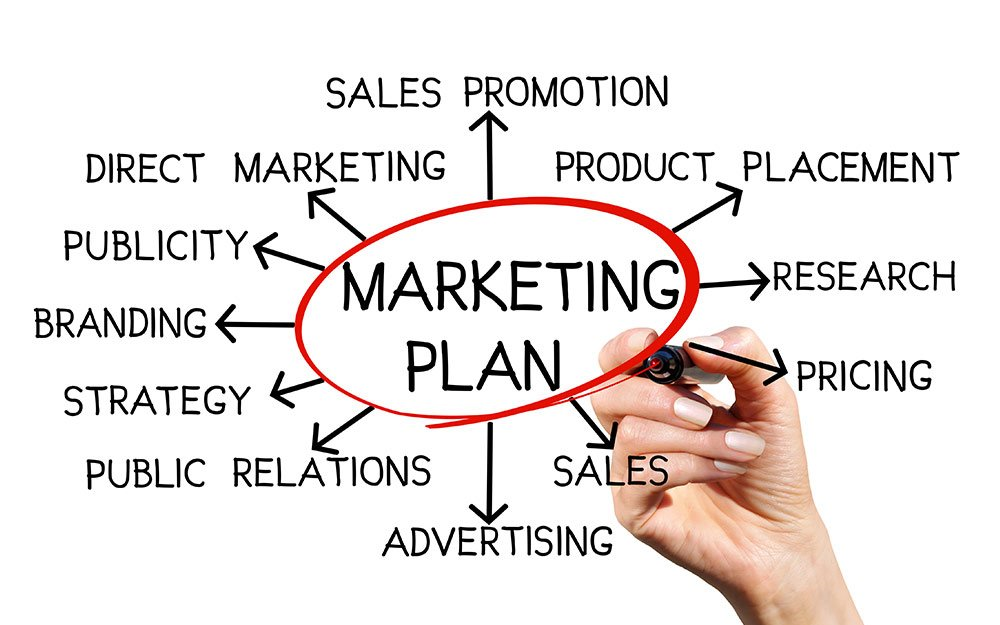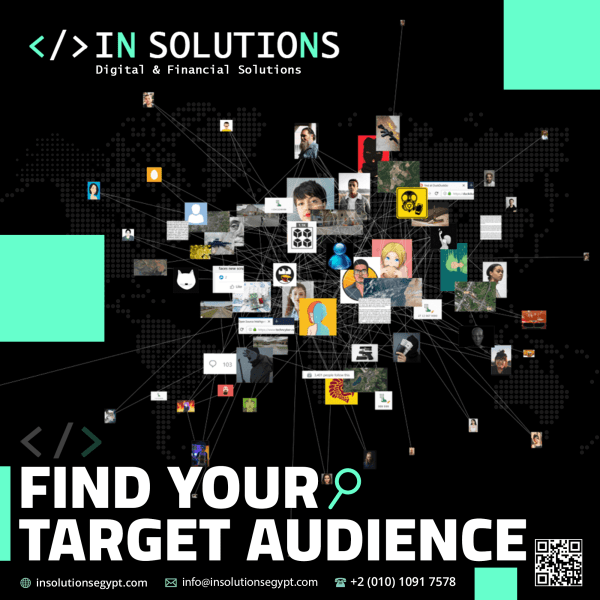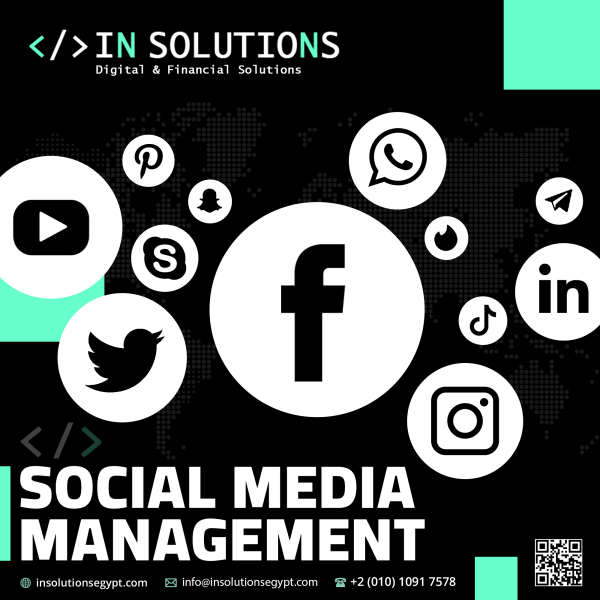Digital Marketing
Digital Marketing
Maximizing Business Growth in the Digital Age
Unlocking the Power of Digital Marketing
Strategies, Techniques, and Best Practices
Digital marketing refers to any marketing efforts that utilize digital channels, such as social media, search engines, email, and mobile apps, to promote products or services. It involves using various digital technologies and tools to connect with potential customers, build brand awareness, and drive sales. Digital marketing is a constantly evolving field, with new trends and strategies emerging all the time. It allows businesses to reach a wider audience, engage with customers in real time, and track the effectiveness of their marketing campaigns through data analysis. In today’s digital age, digital marketing has become an essential part of any successful marketing strategy.
Digital marketing is a type of marketing that involves promoting products or services using digital channels such as search engines, social media, email, mobile apps, and websites. It is a way of reaching out to potential customers and engaging with them using various digital platforms.
Digital marketing offers several benefits over traditional marketing methods. For example, it allows businesses to target specific audiences with greater precision and reach a wider audience at a lower cost. It also provides more opportunities for customer engagement, feedback, and data analysis.
Some common digital marketing strategies include search engine optimization (SEO), pay-per-click (PPC) advertising, social media marketing, email marketing, content marketing, and affiliate marketing. These strategies can be used individually or in combination to create a comprehensive digital marketing campaign.
Successful digital marketing requires a deep understanding of the target audience, an ability to create engaging content, and a willingness to adapt to new technologies and trends. It also requires a solid understanding of data analysis and the ability to measure the effectiveness of marketing campaigns in real time.
Digital Marketing
✔ Search Engine Optimization (SEO)
✔ Pay-Per-Click (PPC)
✔ Social Media Marketing
✔ Email Marketing
✔ Content Marketing
✔ Affiliate Marketing
✔ Video Marketing
✔ Mobile Marketing
✔ Influencer Marketing
✔ Online Reputation Management (ORM)
✔ Web Analytics and Reporting
✔ Marketing Automation
✔ Programmatic Advertising
✔ Voice Search Optimization
✔ Chatbot Marketing
✔ Virtual and Augmented Reality Marketing
About More
Digital Marketing
Digital Marketing refers to the use of digital channels such as websites, social media, email, search engines, and mobile apps to promote products or services, build brand awareness, and engage with customers. It involves various strategies and techniques such as search engine optimization, content marketing, social media advertising, email marketing, and analytics to reach and engage with the target audience.
A Digital Marketing typically includes the following components:
- Search Engine Optimization
- Pay-Per-Click
- Social Media Marketing
- Email Marketing
- Content Marketing
- Affiliate Marketing
- Video Marketing
- Mobile Marketing
- Influencer Marketing
- Online Reputation Management
- Web Analytics and Reporting
- Marketing Automation
- Programmatic Advertising
- Voice Search Optimization
- Chatbot Marketing
- VR & AR Marketing
Search Engine Optimization (SEO)
Search Engine Optimization (SEO) is a digital marketing strategy aimed at increasing the quantity and quality of traffic to a website through organic search engine results. SEO involves optimizing various on-page and off-page factors to improve a website’s visibility and ranking in search engine results pages (SERPs) for specific keywords and phrases.
Some common SEO techniques include:
- Keyword research: Identifying relevant and popular search terms that potential customers may use to find your products or services.
- On-page optimization: Ensuring that the website’s content, structure, and HTML tags are optimized for relevant keywords and phrases.
- Off-page optimization: Building backlinks from other high-quality websites and establishing the website’s authority and trustworthiness.
- Technical optimization: Ensuring that the website is properly structured and coded to enable search engines to crawl and index it effectively.
- Content creation: Creating high-quality, engaging, and relevant content that satisfies user intent and ranks well in search engine results.
Effective SEO requires continuous monitoring and optimization to maintain and improve website rankings. It is important to note that SEO is a long-term strategy that requires patience and persistence to see results, and the SEO landscape is constantly evolving, so it’s crucial to stay up-to-date with the latest trends and best practices.
Pay-Per-Click (PPC)
Pay-Per-Click (PPC) is a digital advertising model in which advertisers pay a fee each time a user clicks on one of their ads. These ads can appear in various formats, including search engine results pages, social media platforms, and other websites.
PPC campaigns are typically managed through platforms such as Google Ads or Microsoft Advertising, which offer a variety of targeting options, including geographic location, keywords, demographics, and interests. Advertisers can set a maximum bid for each click, and the platform’s algorithm will determine which ads to show and when, based on a number of factors, including bid amount, ad relevance, and user experience.
Some key benefits of PPC advertising include:
- Instant visibility: Ads can be up and running within minutes, allowing advertisers to reach their target audience immediately.
- Precise targeting: Advertisers can target specific demographics, interests, and search terms to ensure their ads reach the right audience.
- Measurable results: PPC platforms offer detailed performance metrics, allowing advertisers to track the success of their campaigns and adjust their strategy accordingly.
- Cost control: Advertisers can set a maximum bid and daily budget, ensuring they don’t overspend on their advertising campaigns.
To run a successful PPC campaign, it’s important to have a clear understanding of your target audience, select the right keywords and ad formats, and continuously optimize your campaigns to improve performance and return on investment (ROI).
Social Media Marketing
Social media marketing is a digital marketing strategy that involves using social media platforms to promote a brand, product, or service. It involves creating and sharing content that engages with the target audience and encourages them to interact with the brand.
Some key benefits of social media marketing include:
- Increased brand awareness: Social media platforms offer a vast audience, providing businesses with the opportunity to reach a large number of people and increase their brand visibility.
- Improved customer engagement: Social media provides a two-way communication channel between businesses and their customers, allowing for real-time interaction, feedback, and engagement.
- Targeted advertising: Social media platforms offer sophisticated targeting options, allowing businesses to reach specific demographics and interests with their advertising campaigns.
- Cost-effective: Social media platforms offer a low-cost way to reach a large audience, making it an ideal option for small businesses with limited budgets.
To run a successful social media marketing campaign, it’s important to have a clear understanding of the target audience and which social media platforms they use. Businesses should create engaging and shareable content that aligns with their brand and encourages audience interaction. Social media marketing also requires regular monitoring and analysis to measure performance and adjust strategies accordingly.
Email Marketing
Email marketing promotes through email communication with customers/clients.
Email marketing is a digital marketing strategy that involves sending promotional messages and offers via email to a target audience. It can be used to promote a product or service, build brand loyalty, and increase customer retention.
Some key benefits of email marketing include:
- Direct communication: Email marketing offers a direct line of communication between businesses and their customers, allowing for personalized and targeted messaging.
- Cost-effective: Email marketing is a low-cost option compared to traditional marketing channels and offers a high ROI.
- Measurable results: Email marketing platforms offer detailed metrics such as open rates, click-through rates, and conversion rates, allowing businesses to measure the success of their campaigns.
- Automation: Email marketing can be automated, allowing businesses to send triggered messages and drip campaigns to customers at specific times or based on specific actions.
To run a successful email marketing campaign, it’s important to have a high-quality email list that includes subscribers who have opted in to receive messages. Email content should be relevant and engaging, with a clear call-to-action. Businesses should also ensure that their emails are optimized for mobile devices, as many people now check their email on smartphones and tablets. Additionally, businesses should comply with data privacy laws and regulations, such as GDPR and CAN-SPAM, to protect customer information and avoid legal issues.
Content Marketing
Content marketing is a digital marketing strategy that involves creating and sharing valuable, relevant, and consistent content to attract and retain a clearly defined audience. The ultimate goal of content marketing is to drive profitable customer action.
Some key benefits of content marketing include:
- Increased brand awareness: By creating and sharing valuable content, businesses can increase their brand visibility and attract new customers.
- Improved customer engagement: Content marketing allows businesses to build relationships with customers by providing helpful and informative content that meets their needs.
- Establishing thought leadership: By creating high-quality content, businesses can establish themselves as thought leaders in their industry, which can help build trust and credibility with their audience.
- Improved SEO: Search engines prioritize high-quality, informative content, making content marketing an effective way to improve search engine rankings.
To run a successful content marketing campaign, businesses should have a clear understanding of their target audience and their needs, interests, and pain points. They should create a content strategy that aligns with their brand messaging and business goals and produces content that resonates with their target audience. This can include blog posts, videos, social media posts, e-books, whitepapers, and more. It’s also important to have a consistent publishing schedule and to promote content through various channels to reach a wider audience.
Affiliate Marketing
Affiliate marketing is a digital marketing strategy in which businesses partner with other websites or individuals (affiliates) to promote their products or services. Affiliates earn a commission for each sale or conversion they generate through their unique affiliate link or code.
Some key benefits of affiliate marketing include:
- Cost-effective: Affiliate marketing is a low-cost option compared to traditional advertising channels, as businesses only pay commissions when a sale or conversion occurs.
- Increased reach: Affiliate marketing allows businesses to reach a wider audience through the promotion of their products or services by affiliates.
- Targeted marketing: Affiliates can be selected based on their relevance to the business and their audience, allowing for targeted promotion.
- Measurable results: Affiliate marketing platforms offer detailed metrics such as clicks, conversions, and sales, allowing businesses to measure the success of their campaigns.
To run a successful affiliate marketing campaign, businesses should identify relevant and high-quality affiliates with a strong following in their target audience. They should provide affiliates with promotional materials such as banners, links, and unique discount codes to promote their products or services. It’s also important to track and analyze performance metrics to optimize the campaign and maximize ROI. Additionally, businesses should ensure that they comply with legal requirements and regulations related to affiliate marketing.
Video Marketing
Video marketing involves using videos to promote products/services or convey information.
Video marketing is a digital marketing strategy that involves using video content to promote a brand, product, or service. It can include various types of videos, such as promotional videos, product demonstrations, tutorials, webinars, and more.
Some key benefits of video marketing include:
- Increased engagement: Video content is highly engaging and can help capture the attention of viewers for longer periods compared to other types of content.
- Improved brand awareness: Videos can help increase brand awareness by showcasing a brand’s personality and values and creating an emotional connection with the audience.
- Higher conversion rates: Video content has been shown to increase conversion rates by providing a more immersive and compelling experience for viewers.
- Better SEO: Video content can improve a website’s search engine rankings by increasing dwell time, which is the amount of time visitors spend on a website.
To run a successful video marketing campaign, businesses should have a clear understanding of their target audience and their preferences for video content. They should create high-quality, engaging videos that align with their brand messaging and business goals. Videos should be optimized for different platforms, including social media, YouTube, and a business’s website. Additionally, businesses should track and analyze performance metrics to optimize their campaigns and maximize ROI.
Mobile Marketing
Mobile marketing delivers promotions or information to customers via mobile devices.
Mobile marketing is a digital marketing strategy that focuses on reaching and engaging customers on their mobile devices, such as smartphones and tablets. It can include various tactics, such as mobile apps, SMS messaging, mobile-friendly websites, and mobile advertising.
Some key benefits of mobile marketing include:
- Increased reach: Mobile devices are widely used, making mobile marketing an effective way to reach a large and diverse audience.
- Personalization: Mobile marketing can be highly personalized, allowing businesses to deliver targeted messages and offers based on a customer’s location, interests, and behavior.
- Improved engagement: Mobile marketing can provide a more immersive and interactive experience for customers compared to traditional marketing channels.
- Real-time communication: Mobile marketing allows for real-time communication and instant feedback from customers, which can help businesses build stronger relationships with their audience.
To run a successful mobile marketing campaign, businesses should first ensure that their website and content are mobile-friendly, with a responsive design that adapts to different screen sizes. They should also develop mobile apps and use SMS messaging to deliver personalized offers and promotions to customers. Mobile advertising can also be used to target customers on social media and other mobile apps. Additionally, businesses should track and analyze performance metrics to optimize their campaigns and maximize ROI. It’s important to comply with mobile-specific regulations, such as TCPA regulations, to avoid legal issues.
Influencer Marketing
Influencer marketing involves promoting products/services through influential people on social media.
Influencer marketing is a digital marketing strategy in which businesses partner with individuals who have a strong online following, typically on social media, to promote their products or services. These individuals, known as influencers, have a significant impact on their followers’ purchasing decisions and can help businesses reach a wider and more engaged audience.
Some key benefits of influencer marketing include:
- Increased credibility: Influencers are seen as experts in their respective niches, and their endorsement of a product or service can increase its credibility and legitimacy.
- Targeted promotion: Influencers can be selected based on their relevance to the business and their audience, allowing for targeted promotion.
- Higher engagement: Influencers have a highly engaged following, and their content can generate a lot of likes, comments, and shares.
- Cost-effective: Influencer marketing can be cost-effective compared to traditional advertising channels, as businesses only pay for the promotion or partnership.
To run a successful influencer marketing campaign, businesses should first identify relevant and high-quality influencers who align with their brand values and target audience. They should develop a clear campaign brief that outlines the goals, messaging, and deliverables for the partnership. Influencers should be provided with creative freedom to showcase the product or service in an authentic and natural way. Additionally, businesses should track and analyze performance metrics to optimize their campaigns and maximize ROI. It’s important to comply with advertising regulations and ensure that influencer partnerships are clearly disclosed as sponsored content.
Online Reputation Management (ORM)
ORM manages a company’s online reputation through monitoring and improving online reviews.
Online Reputation Management (ORM) is the practice of monitoring, influencing, and managing a business or individual’s online reputation. ORM involves various strategies and tactics to ensure that a brand or person’s online presence is positive and portrays them in the best possible light.
Some key benefits of Online Reputation Management include:
- Building trust and credibility: A positive online reputation can help build trust and credibility with customers and stakeholders.
- Crisis management: ORM can help mitigate and respond to negative reviews, comments, or posts to prevent them from damaging a brand’s reputation.
- Improved search engine results: ORM can improve a business’s search engine rankings by promoting positive content and suppressing negative content.
- Competitive advantage: A positive online reputation can provide a competitive advantage and differentiate a business from its competitors.
To effectively manage online reputation, businesses should have a proactive approach and constantly monitor their online presence, including social media platforms, review sites, and search engine results. They should actively engage with customers and stakeholders online and respond promptly to any negative comments or reviews. Additionally, businesses can develop a content strategy to create and promote positive content and engage with industry thought leaders and influencers to improve their online reputation. It’s important to stay up to date with the latest trends and developments in online reputation management to effectively protect and enhance a brand’s online reputation.
Web Analytics and Reporting
Web analytics and reporting measure website performance and provides insights for improvement.
Web analytics and reporting is the practice of measuring and analyzing website traffic and user behavior to improve website performance and achieve business objectives. Web analytics involves the collection, measurement, and analysis of data related to website traffic, user behavior, and conversions, while reporting involves presenting this data in a meaningful way to stakeholders.
Some key benefits of web analytics and reporting include:
- Data-driven decision-making: Web analytics provides valuable insights into website performance, allowing businesses to make data-driven decisions and improve website user experience and conversion rates.
- Optimization: Web analytics helps identify areas for improvement on the website, such as pages with high bounce rates or low conversion rates, which can be optimized to improve website performance.
- Measuring ROI: Web analytics can help measure the return on investment (ROI) of website initiatives, such as advertising campaigns or website redesigns.
- Reporting to stakeholders: Web analytics reports can be used to communicate website performance and progress towards business goals to stakeholders.
To effectively measure and report on website performance, businesses should first set specific goals and KPIs to track, such as conversion rates, page views, or bounce rates. They should implement web analytics tools, such as Google Analytics, to collect and measure data related to website traffic and user behavior. Businesses can then use this data to create reports that highlight trends, insights, and actionable recommendations to improve website performance. It’s important to ensure that web analytics reports are tailored to the audience and presented in a clear and understandable format. Regular reporting and analysis can help businesses stay informed about website performance and make informed decisions to improve user experience and drive conversions.
Marketing Automation
Marketing automation uses technology to automate and streamline marketing processes.
Marketing automation is a software technology that enables businesses to automate repetitive marketing tasks and workflows, such as email campaigns, social media posting, and lead generation. Marketing automation allows businesses to target and engage with their customers and prospects with personalized and relevant content, which can improve lead generation and conversion rates.
Some key benefits of marketing automation include:
- Improved lead generation and nurturing: Marketing automation enables businesses to automate lead generation and nurturing activities, such as lead scoring, segmentation, and personalized content delivery, which can improve the quality and quantity of leads generated.
- Increased efficiency and productivity: Automation of repetitive tasks and workflows can improve marketing team efficiency and productivity, allowing businesses to focus on more strategic initiatives.
- Personalized and targeted communication: Marketing automation allows businesses to deliver personalized and targeted content to their customers and prospects based on their interests, behavior, and preferences.
- Improved ROI: Marketing automation can improve ROI by reducing costs associated with manual marketing tasks, improving lead quality and conversion rates, and providing data-driven insights for more informed decision-making.
To implement marketing automation, businesses should first identify their key marketing objectives and pain points, and then select a marketing automation platform that aligns with their business goals and budget. They should define their target audience and develop a content strategy that aligns with their interests and preferences. Businesses should also integrate their marketing automation platform with other tools and systems, such as CRM software, to ensure seamless data transfer and reporting. Finally, businesses should track and measure key performance metrics, such as lead generation and conversion rates, to optimize their marketing automation campaigns and achieve their business objectives.
Programmatic Advertising
Programmatic advertising automates the buying and selling of digital ad space.
Programmatic advertising is the automated buying and selling of digital ad inventory through real-time bidding (RTB) and machine learning algorithms. Programmatic advertising allows businesses to target specific audiences with personalized ads and optimize ad campaigns for maximum effectiveness and ROI.
Some key benefits of programmatic advertising include:
- Increased efficiency: Programmatic advertising streamlines the ad buying process, making it faster and more efficient, and reduces manual labor and errors associated with traditional advertising methods.
- Targeted advertising: Programmatic advertising enables businesses to target specific audiences with personalized ads based on demographics, behavior, and interests, which can improve ad relevance and effectiveness.
- Real-time optimization: Programmatic advertising allows businesses to track and measure ad performance in real-time and adjust ad campaigns accordingly to improve ROI.
- Improved ROI: Programmatic advertising provides data-driven insights into ad performance, allowing businesses to optimize their ad spend and improve ROI.
To implement programmatic advertising, businesses should first define their target audience and set their ad campaign goals and KPIs. They should select a programmatic advertising platform that aligns with their business objectives and budget, and develop ad creatives that are personalized and relevant to their target audience. They should also track and measure key performance metrics, such as click-through rates (CTR) and cost-per-click (CPC), to optimize their ad campaigns and improve ROI. Finally, businesses should continually test and refine their programmatic advertising campaigns to achieve the best possible results.
Voice Search Optimization (VSO)
Voice search optimization improves a website’s ranking for voice-based search queries.
Voice search optimization (VSO) is the process of optimizing website content and structure to improve visibility and ranking in voice search results. Voice search is becoming increasingly popular, with the rise of voice assistants like Siri, Alexa, and Google Assistant, and businesses need to optimize their online presence to stay competitive.
Some key factors to consider for voice search optimization include:
- Conversational keywords: Voice search queries are typically longer and more conversational in nature than typed search queries, so businesses should include long-tail keywords and phrases that reflect how people speak when they use voice search.
- Featured snippets: Voice assistants often pull answers from featured snippets in search results, so businesses should optimize their content to appear in featured snippets by providing concise, clear answers to common questions.
- Mobile optimization: Voice search is often performed on mobile devices, so businesses should ensure their website is optimized for mobile devices with a responsive design and fast loading times.
- Local SEO: Voice search is often used for local queries, such as “near me” searches, so businesses should optimize their website and Google My Business profile for local SEO.
- Structured data: Structured data helps search engines understand the content and structure of a website, so businesses should implement structured data to improve their visibility in voice search results.
To implement voice search optimization, businesses should first conduct keyword research to identify relevant conversational keywords and phrases that reflect how people speak when they use voice search. They should optimize their content to provide clear, concise answers to common questions and ensure their website is mobile-friendly and optimized for local SEO. They should also implement structured data to help search engines understand their content and structure. Finally, businesses should track and measure their voice search performance to continually optimize their strategy and improve their visibility in voice search results.
Chatbot Marketing
Chatbot marketing uses AI-powered chatbots to communicate with customers and promote products.
Chatbot marketing is the use of chatbots to engage with customers and provide personalized and automated assistance throughout the customer journey. Chatbots are computer programs that simulate human conversation, and they can be integrated into websites, social media platforms, and messaging apps to provide instant and automated customer service.
Some benefits of chatbot marketing include:
- 24/7 availability: Chatbots can provide assistance to customers anytime, anywhere, even outside of business hours, which can improve customer satisfaction and loyalty.
- Personalized interaction: Chatbots can be programmed to provide personalized recommendations and offers based on customer preferences and behavior, which can improve engagement and conversions.
- Cost-effective: Chatbots can handle multiple conversations simultaneously, reducing the need for human resources and lowering operational costs.
- Data collection and analysis: Chatbots can collect and analyze data on customer interactions, which can be used to improve marketing strategies and customer experiences.
To implement chatbot marketing, businesses should first identify the customer pain points and queries that can be addressed by chatbots. They should select a chatbot platform that aligns with their business objectives and budget, and develop chatbot scripts and responses that are personalized and relevant to their target audience. They should also integrate the chatbot with their website, social media platforms, and messaging apps, and track and measure key performance metrics, such as customer satisfaction, engagement rates, and conversion rates, to optimize their chatbot strategy and improve ROI. Finally, businesses should continually test and refine their chatbot marketing campaigns to achieve the best possible results.
Virtual and Augmented Reality Marketing (VR/AR)
Virtual and augmented reality marketing use technology to create immersive brand experiences.
Virtual and augmented reality (VR/AR) marketing involves the use of these technologies to create immersive and interactive experiences for customers. VR technology creates a completely digital environment that users can experience through a VR headset, while AR technology overlays digital elements onto the real world through a mobile device or smart glasses.
Some benefits of VR/AR marketing include:
- Enhanced engagement: VR/AR experiences can captivate and engage customers, providing a memorable and immersive experience that can drive brand awareness and loyalty.
- Personalization: VR/AR experiences can be customized to provide personalized content and product recommendations to customers, based on their preferences and behavior.
- Product visualization: VR/AR can help customers visualize products in a realistic and interactive way, which can improve product understanding and purchase intent.
- Brand differentiation: VR/AR experiences can differentiate a brand from competitors by providing a unique and innovative marketing approach.
To implement VR/AR marketing, businesses should first identify the use cases where these technologies can add value to their marketing efforts. They should select a VR/AR platform that aligns with their business objectives and budget, and develop creative and engaging VR/AR experiences that are relevant and personalized to their target audience. They should also integrate the VR/AR experience with their website, social media platforms, and other marketing channels, and track and measure key performance metrics, such as engagement rates and conversion rates, to optimize their VR/AR strategy and improve ROI. Finally, businesses should continually test and refine their VR/AR marketing campaigns to achieve the best possible results.
Best at Creating a Digital Marketing.
Send Request Now, I Want Digital Marketing ?!

 then 'Add to home screen'
then 'Add to home screen' then 'Add to home screen'
then 'Add to home screen'


